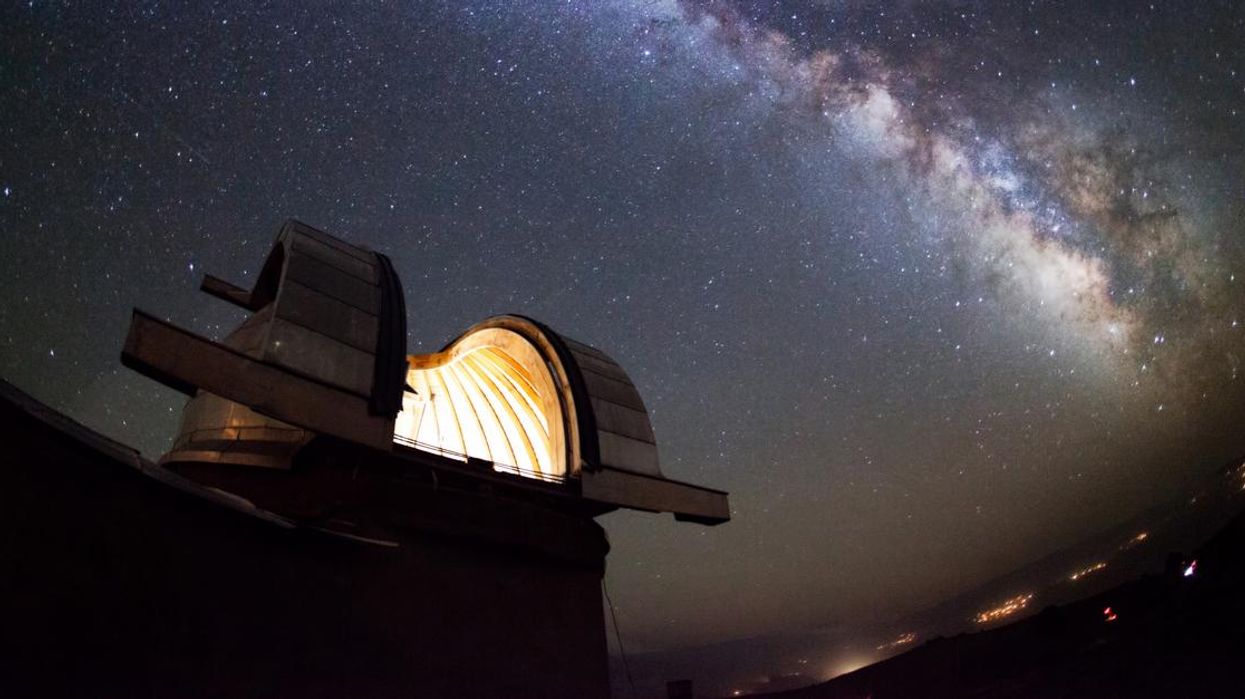News
Greg Evans
Jan 13, 2018

Picture:
Getty Images/iStockphoto
Astronomers have moved a step closer to learning the truth behind a mysterious signal coming from the depths of space.
Since 2007 a fast radio burst (FRB) from a distant cosmic location has been puzzling experts. Where could it be coming from? Aliens? A new planet? Solar flares?
New research published by Nature says that the signals are likely coming from an unidentified source three billion light-years away.
The new data was obtained thanks to telescopes at the Arecibo Observatory in Puerto Rico and Green Bank Observatory in West Virginia.
The new findings show that the FRBs are now becoming more and more intense and emit more energy in one millisecond than the sun does all day.
The study was possible thanks to one particular FRB known as FRB 121102, discovered by postdoctoral researched Laura Spitler in 2014, which has repeated sporadically since then.
The experts believe that their research shows that FRB 121102 is likely to be coming from a young neutron star in a highly magnetised area of space, possibly near a black hole.
In the study they write:
Such large rotation measures have hitherto been observed only in the vicinities of massive black holes (larger than about 10,000 solar masses).
Indeed, the properties of the persistent radio source are compatible with those of a low-luminosity, accreting massive black hole.
The bursts may, therefore, come from a neutron star in such an environment or could be explained by other models, such as a highly magnetized wind nebula or supernova remnant surrounding a young neutron star.
In addition, they admit that whatever object is creating these signals, it will be unlike anything that we have ever seen before.
The radio waves that it is producing are 500 times greater than any other FRB previously documented.
FRB 121102 is said to emanate from a region of a dwarf galaxy that can form stars.
The waves are said to have passed through a cloud of magnetized plasma or electrical particles, which can cause their direction to twist, an effect known as "Faraday rotation".
Speaking to Space.com Jason Hessels, an astrophysicist at the University of Amsterdam said:
I couldn't believe my eyes when I first saw the data. Such extreme Faraday rotation is extremely rare.
Myself and many others would love to know whether this fast radio burst phenomenon has a single or multiple physical origins.
There is a whole host of telescopes coming online in the next few years that promise to discover many more such sources and to answer these questions,
Not only could the wavelengths help identify a mysterious object in the universe, they could also help experts learn more about the areas of space that it has travelled through.
As they have travelled over such huge distances and time, the data could be used to explore the matter it has encountered on its journey.
Sarah Burke-Spolar of West Virgina University is quoted by news.com.au as saying:
This phenomenon is so well-tuned to explore the universe.
This detection has really broken open the gates of a new realm of science and discovery.
It's unlikely that we would actually want to visit there, however.
According to Shami Chatterjee, a senior research associate at Cornell University:
Whatever is happening there is scary.
We would not want to be there.
Noted.
HT news.com.au
More: Nasa just sent a signal 13 billion miles into space. And got a response
Top 100
The Conversation (0)













